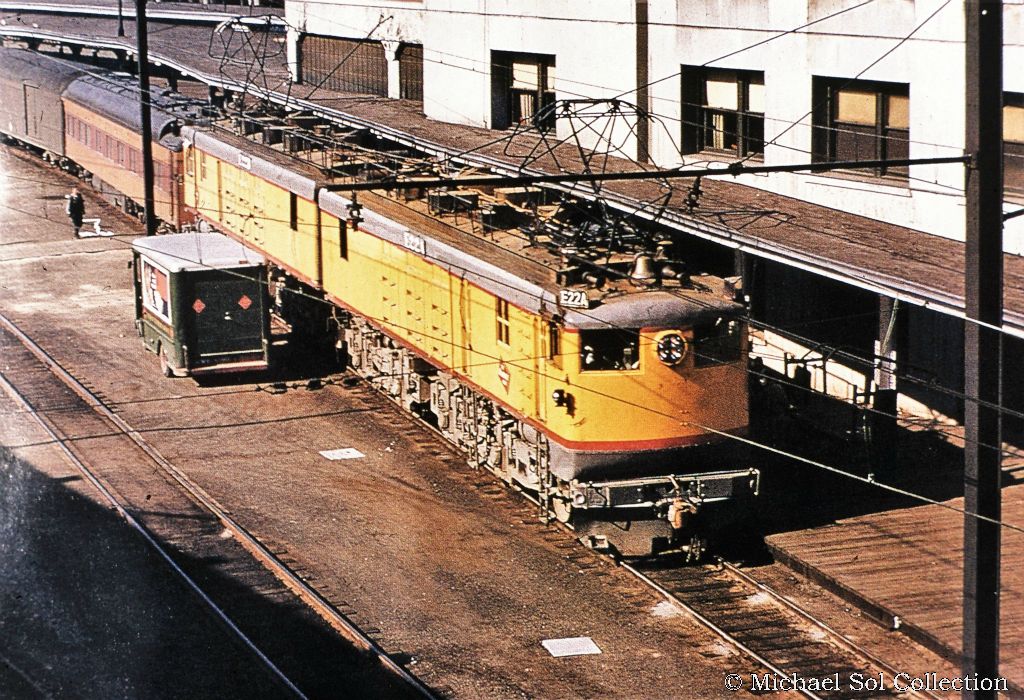This is incorrect, the EF/EP class system was not specific to Boxcab/GE Motors (as the EF-4/Joe proves). The EP-2 was the Bipolar and the EP-3 was the Quill drive.
The Milwaukee went back to GE to order 15 new passenger electrics, however due to WWI, the government forced them to split the order between GE and Westinghouse. GE created the EP-2 Bipolar and Westinghouse created the EP-3. A few notes for anyone interested-
The EP-2s were fantastic motors to begin with, and until WWII, they were kept up well and generally liked by crews. Poor visibility and the manual boiler were not crew favourites, but they could take practically any curve and they rolled smoothly - so smoothly that a Mallet in yard service bumped one on the turntable in Othello and sent the poor Bipolar straight out the back of the roundhouse, obliterated a couple walls with that! Unfortunately, WWII resulted in decreased maintenance and all 5 of the EP-2s suffered heavily as a result. They were rebuilt in the early 1950s, but thanks to management forcing four out of the five Bipolars to be rebuilt at the Milwaukee, WI shops instead of the Tacoma, WA shops, they were permanently ruined as the Milwaukee shops had no idea how electrics worked. After a short few years of poor performance - and a momentary consideration of pushing them to freight service - they were retired and scrapped, save for E2. Semi-streamlined and given UP paint, their last years were decidedly quite sad.
EP-3s were mechanical failures on the Milwaukee because Westinghouse, along with Baldwin, had essentially built a New Haven electric (coincidentally, called an EP-2 on the NH), but increased the weight of the locomotive dramatically despite not making any significant changes to the running gear. The EP-3 Quills would grind their own frames to death and break apart, even going so far as to shoot out pieces of the quill itself that cut catenary poles apart. Additionally, the New Haven was mostly flat and straight, while the Milwaukee was heavily graded and had extremely tight curves - flange wear and the fact that the MILW EP-3s were 78% heavier than the NH EP-2s resulted in disaster. One EP3, 10301, was split down the middle and turned into an AB motor, similar to the EF/EP1s, but the experiment was deemed a failure and it was reconverted back to a single motor. The speed recorders in both cabs failed constantly, and the Milwaukee abandoned maintenance on the number one cab shortly after introduction, and only ran them with the number two cab forward.
Despite the fact they were a failure, the EP-3s ran smooth in the cab and had decent power, but they were terrible engines for the railroad. One received a unique grey paintscheme with black stripes and a red roof. One was wrecked and stored until WWII when it was finally scrapped for the metal. All nine remaining EP-3s ended up with roadnumber specific details that make modeling them decidedly difficult.
Additionally, there were passenger Boxcabs after the fact - called EP-1As, these were regeared from the Boxcabs in later years, however these were a complete mechanical failure and were converted back to freight service after a few short years. E22 and E23 were semi-streamlined Boxcabs that were later merged into a single EF-5 class and E23's C motor - the only one with a C motor - was given to E39 and relabeled E39D. Of note is the fact that during their tenure as passenger motors, they were given the UP-style paintscheme that the Milwaukee adopted after taking over the UP's
City Of trains.
To answer OPs question, Tume has created the EP-2s and EP-3s in Trainz, but I don't believe these will become available any time soon - its been well over a decade, after all. An EP-2 was put out by Pweiser, along with the ES-2, in the link earlier in the thread. Nobody, to my knowledge, has ever created the ES-1 (limited to the 1500V DC Great Falls line), nor the EP-1As. Someday we could use a fresh set of new Milwaukee electrics, built up to modern model/texturing standards.
Cheers,
SM

